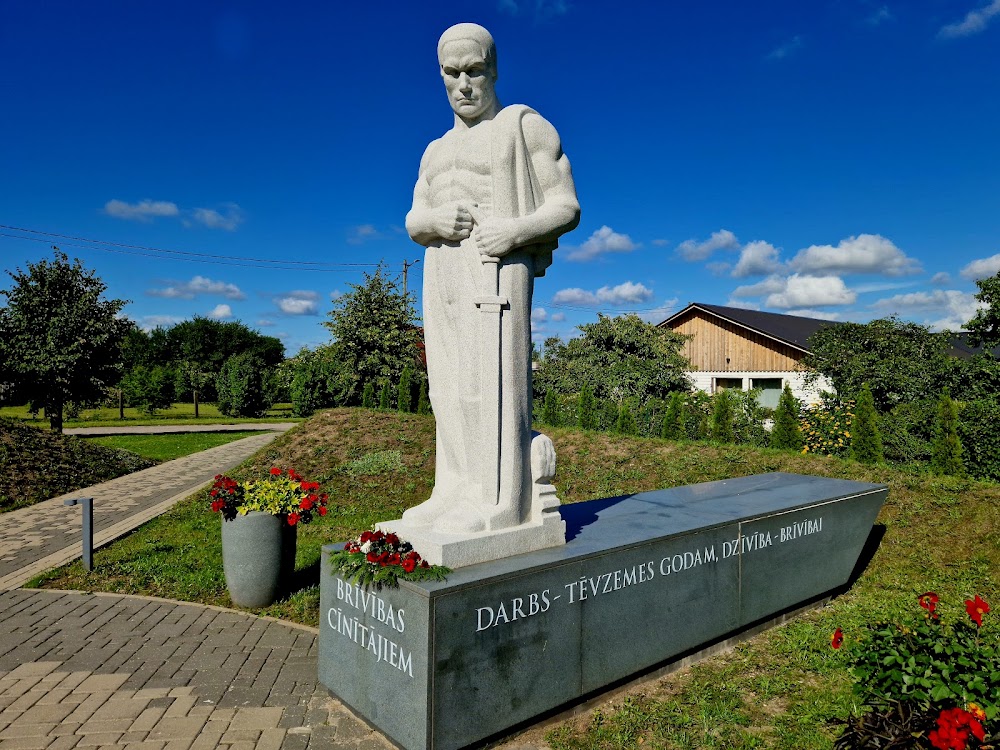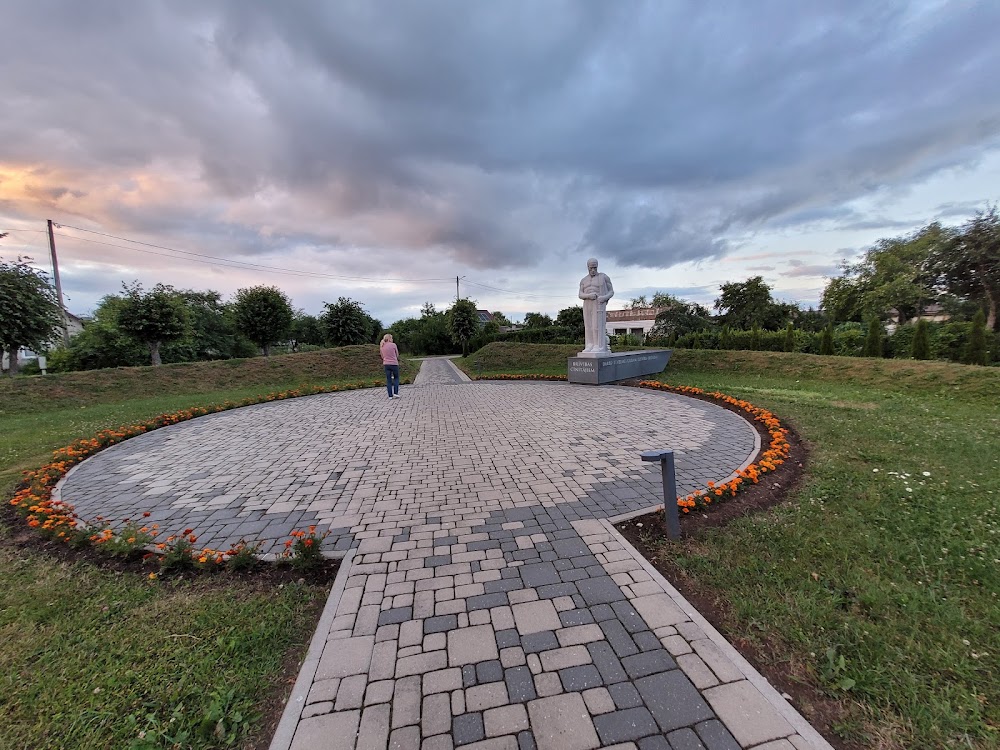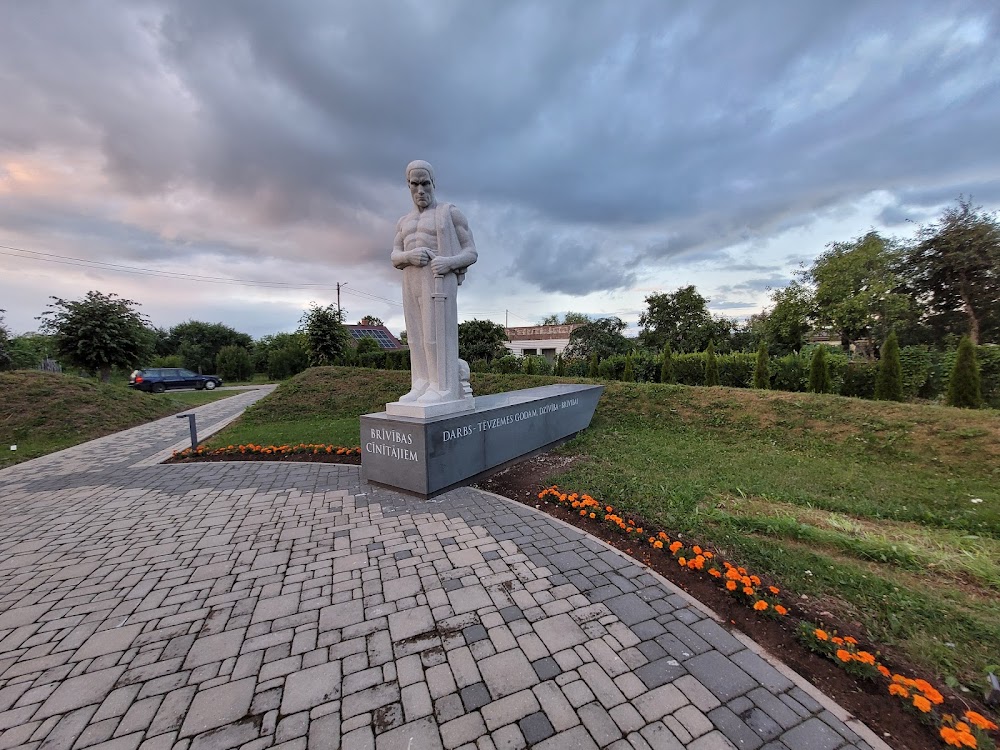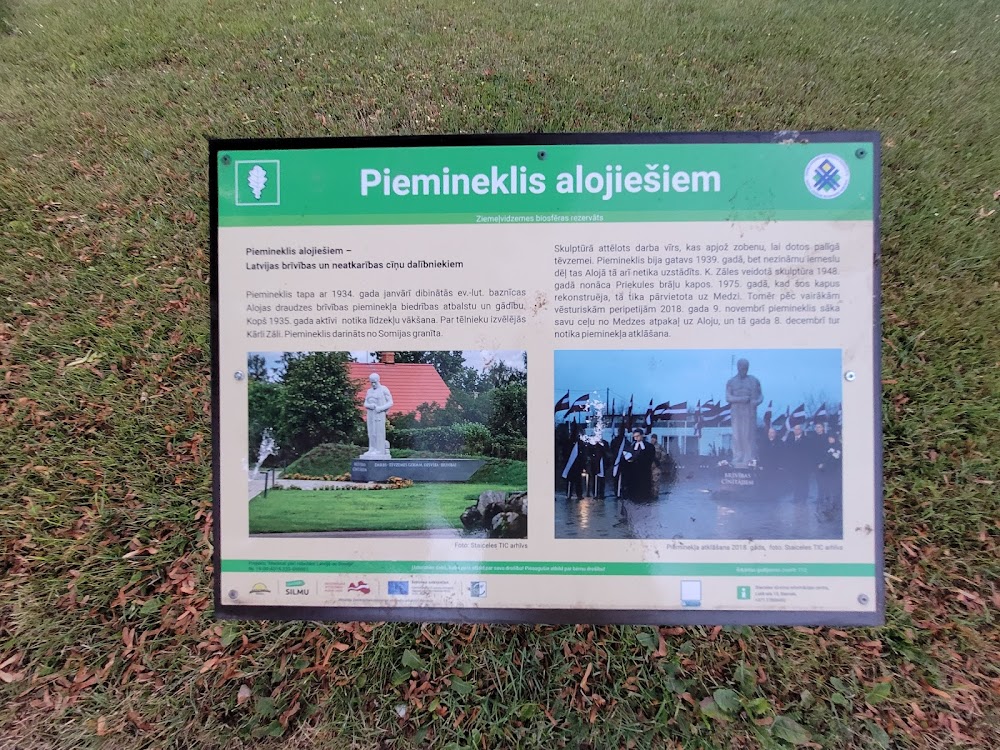Aloja WWII Monument (Alojas Otrā pasaules kara piemineklis)
Overview
Alojas Brīvības piemineklis: A Tribute to Courage and Resilience
Alojas Brīvības piemineklis, also known as the Aloja WWII Monument, stands as a poignant tribute in the charming town of Aloja, located within the Aloja Municipality of Latvia. This memorial is deeply intertwined with the region's tumultuous history during World War II and its aftermath. It honors the bravery and sacrifices of local soldiers while also mourning the civilian lives lost in the conflict.
Origins of the Monument
The concept for the monument emerged in the early 1990s, shortly after Latvia regained its independence from the Soviet Union in 1991. In the wake of this newfound freedom, the local community felt a strong urge to honor both the fallen and the survivors of World War II, who had endured tremendous hardships under Nazi and Soviet occupations. This collective desire sparked a community-driven initiative, with residents and local government joining forces to transform this vision into reality.
Funding and Community Involvement
Funding for the Alojas Brīvības piemineklis came from a mix of public donations, local business contributions, and support from the municipality. Many families in the area generously donated in memory of their loved ones who suffered during the war. Local artisans and craftsmen also played a vital role, offering their skills at reduced rates or even free of charge to support this meaningful project.
The Design
The design of the monument was entrusted to renowned Latvian sculptor Imants Zvirgzdins. His vision encapsulated solemn reverence, evoking both the pain of loss and a hopeful yearning for peace. Standing at approximately 4 meters tall, the monument is constructed from granite, chosen for its durability and timeless beauty. The base features intricate carvings that vividly depict the region’s struggle and resilience throughout the war.
Symbolism and Surroundings
At the heart of the monument lies a stylized flame, symbolizing the eternal memory of those who perished. Accompanying this powerful imagery is an engraved dedication that reads, "Mūžīga piemiņa mūsu varoņiem un ciešanas cietušajiem," translating to "Eternal memory to our heroes and those who suffered." Surrounding the monument is a beautifully landscaped area, designed as a tranquil space for reflection and remembrance.
Community Participation in Construction
A vital aspect of the construction process was the active involvement of the local community. Volunteers of all ages came together to prepare the site, dig foundations, and create the surrounding garden. This spirit of collaboration imbued the monument with a sense of unity and shared purpose. The monument was completed in the spring of 1994 and inaugurated with a solemn ceremony attended by town officials, war veterans, and community members.
Annual Commemorative Events
Today, the Alojas Brīvības piemineklis serves as a focal point for annual commemorative events, particularly on May 8th, known as Victory in Europe Day. During these ceremonies, residents gather to lay flowers, light candles, and reflect on the past, ensuring that the lessons of history are preserved for future generations. The monument has become a symbol not only of remembrance but also of the community’s resilience and unwavering commitment to peace.
A Lasting Legacy
Standing tall and steadfast, the Alojas Brīvības piemineklis continues to remind the people of Aloja Municipality of the sacrifices made by their ancestors and the enduring spirit of their community. Its creation and lasting presence emphasize the importance of preserving history and upholding shared values of freedom and peace.






